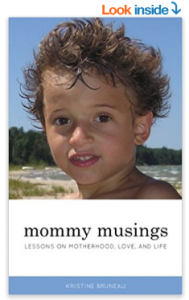 Rituals are often thought of as familiar ceremonies like baptisms, weddings, and funerals. But I like the idea that any act or symbolic behavior, when performed regularly, can be called a ritual.
Rituals are often thought of as familiar ceremonies like baptisms, weddings, and funerals. But I like the idea that any act or symbolic behavior, when performed regularly, can be called a ritual.
Rituals can be as simple as walking the dog, making coffee, playing a game, or writing in a journal. You can share a ritual with others or alone, in a special place or out in the open. The point is you can choose something, anything and declare the time spent holy.
Rituals are not just abstract ideas or expressions; they affect your world.
Several years ago, I participated in a discussion course from Northwest Earth Institute with a group of women called Healthy Children Healthy Planet. We didn’t know each other. We were mothers who came from different backgrounds, religions, and ideologies. Some of us were working moms, others stayed at home. We were vegan, vegetarian, and omnivores. We acknowledged that we didn’t have all the answers, but we were willing to come together, open up, and listen. The weekly discussions enriched my life. And our conversations opened my eyes to new possibilities, especially when it came to rituals.
Incorporating rituals and celebrations into daily family life can be enriching.
I think families, especially, can get the simple acts in life that are the most important rituals to us. I learned from my group discussions that I could take the most mundane rite or task in my life and make it more meaningful just by giving it presence of mind. After reading several articles on family rituals and celebrations, I considered the acts I performed regularly. Writing and snuggling with James came easily to mind. When James was a toddler, he would awake around 7 a.m., stumble into my upstairs office where I had been writing since 5 a.m., and climb into my lap. Together we snuggled for several minutes. James expected me to be there every morning at my desk writing – and I was. Those precious moments became a ritual for us.
The women in my group also shared their rituals, from game night, to telling stories in Spanish, and to having a “beast feast” (feeding the animals at Thanksgiving, instead of eating the animals).
“Anything can be a ritual if the family puts energy into making it meaningful. Ritual sanctifies time.” – Mary Pipher, author of “The Shelter of Each Other”
I realized that I had performed more rituals than I thought: having picnics in the family room with silly food, building a plastic animal zoo, chasing James around the house to catch and tickle him, and singing and dancing along to the “Bare Necessities” song from Disney’s “Jungle Book.”
I tried a few new rituals at home such as lighting a candle at dinner and then blowing it out and sharing what we were thankful for. James liked the candle-at-dinner ritual because it reminded him of birthday parties – without the presents.
Happy rituals make us happy.
I learned that all the rituals the women in my group shared were simple, meaningful, and connective. Performing rituals seemed to bring us happiness, and many everyday rituals are surprisingly effective.
Now that he’s 12, James doesn’t climb into my lap anymore, but when he’s willing, we snuggle on the couch or big chair to read together, or watch a movie. And James still likes me to chase him around the house with my minion Beck to capture, tackle, and tickle him. It lets us unwind from our day, and makes us happy.
Which rituals work best?
It depends on you. Exploring a variety of rituals, and examining alternatives to elaborate celebrations and gifts can enrich a family’s experience. We can get happy by simply spending meaningful time with ourselves and our family.
What’s your ritual? Why do you need it? Why do you think it works?
Thanks for reading. If you like this post, please feel free to share it with your friends or send me a comment. You can also post a comment on my blog or Facebook.



